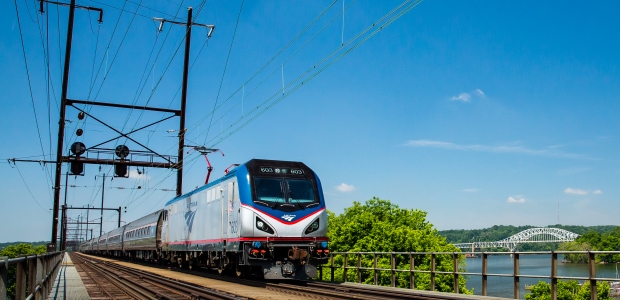
DOT Reveals Plan for Northeast Corridor Upgrade
"The Department of Transportation believes that investing in this vision for the Northeast Corridor must happen—because rail does more than take us places; it provides us with opportunities and connects us to the future," said U.S. Transportation Secretary Anthony Foxx.
The U.S. Department of Transportation's Federal Railroad Administration has revealed its 30-year plan for upgrading the heavily traveled Northeast Corridor, the key infrastructure segment for Amtrak and thus passenger rail as it currently exists in the United States. "The Department of Transportation believes that investing in this vision for the Northeast Corridor must happen—because rail does more than take us places; it provides us with opportunities and connects us to the future," said U.S. Transportation Secretary Anthony Foxx, doubtless hoping the plan fits with the incoming Trump administration's infrastructure goals.
FRA worked on it for four years of with northeastern states and federal and state partner agencies and held dozens of public meetings. "While building this recommendation would require significant investment, the cost of doing nothing is much greater. The communities and the economies of the Northeast cannot grow and flourish without significant, new investment," Foxx said.
The plan would:
- Add new tracks to increase the Northeast Corridor to four tracks in most locations, allowing more frequent and faster service.
- Provide intercity access to Philadelphia Airport so passengers don't have to change trains at 30th Street.
- Add direct and frequent service to Hartford, Conn., and Springfield, Mass.
- Increase -- in some cases double -- the number of regional trains and provide up to five times more intercity trains.
FRA's plan envisions cutting the travel time from Boston to New York City by 45 minutes (to a total time of 2 hours, 45 minutes) and the travel time from New York City to Washington, D.C., by 35 minutes (total time of 2 hours, 10 minutes).
"While the recommendation made today would grow the role of rail along the Northeast Corridor, it prioritizes bringing the current corridor back to good condition, or a state of good repair, first," FRA reported. "With the corridor returned to good condition, the recommendation includes projects that will allow for even faster and more reliable service, along with more options for commuters and travelers. The recommendation is also projected to create 47,000 jobs each year, for 30 years."
"In order to keep moving forward, we need a new vision for the Northeast Corridor – a corridor that can move an ever-increasing population safer, faster and more reliably than before," said FRA Administrator Sarah E. Feinberg. "We need a corridor that provides more options and more trains for commuters. One that allows for seamless travel between the nation's capital and New York, and New York and Providence and Boston. A corridor that provides streamlined connections between a city's airports and its city center. And a corridor that can efficiently and reliably serve a population that is growing quickly."
For more information about it, visit www.necfuture.com.